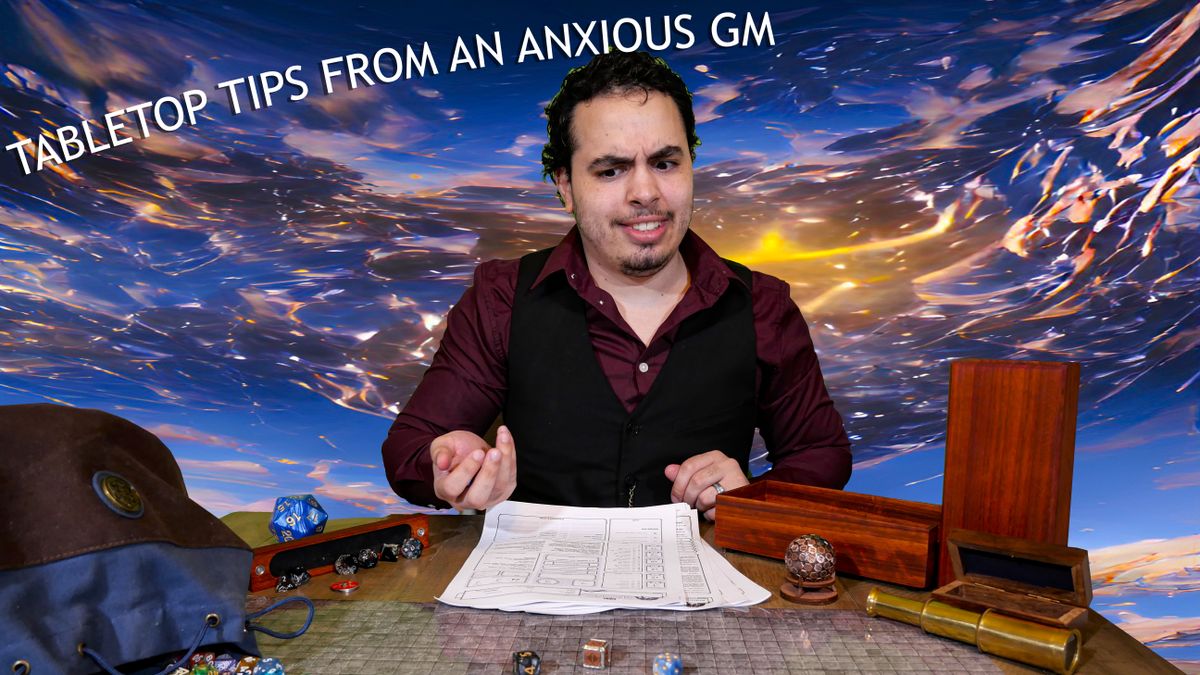“How do I start playing TTRPGs?” is a broad question that’ll net you a number of blanket statements, but I’ll try to be as specific as possible to break down a multistep process for you to get started. As someone who struggles with anxiety and depression — a combo that is less than ideal for a journalist or a game master juggling seven different players in a six-hour Dungeons & Dragons game — it can be tough to break into a game that’s all about socializing, so I want to untangle this question with my experience from a different angle.
In this week’s column of Tabletop tips from an anxious GM (all of which can be found on our DND tips hub), I’ll be answering a question that has been posed by friend and colleague John Loeffler. He writes, “What would you tell someone who hasn’t played TTRPGs but wants to go about doing so? Both from a player and a DM/GM perspective?”
Getting into TTRPGs may seem like a daunting task, but it’s really not. It’s like any other game except you get to actually roleplay your own character. Some TTRPGs, like D&D 5e, can be a bit rules-crunchy, so that’s intimidating to some, but here are a few ways you can jump into D&D or any TTRPG with no experience whatsoever.
TL;DR
Find some friends, do your research, and buy supplies. Once you get all of that done, then you just need to find a platform to meet (physically or virtually) and schedule your game. Finally, decide who’s going to be the GM, figure out the rules together, create your characters, and then just play the game.
You don’t need to know all of the rules in the book to have a good time, just be open-minded and accommodating to everyone. Most importantly, make sure you set boundaries and limits between the players to ensure that no one does anything to trigger anyone else. The last thing you want is a party member causing trouble for the group and ruining the fun. If someone isn’t willing to respect the boundaries in place, they don’t belong at your gaming table.
How to start playing TTRPGs — An in-depth look
Find some friends. If you have people to play with already, skip this graph. Otherwise, you’re going to need to do some hunting. If you’re looking to play D&D specifically, I recommend hopping on D&D Beyond and either posting on the forums or looking for open forums requesting new players. You could also look for groups using Roll20’s LFG system, which is a virtual tabletop as well as a group finder, and you’ll find more TTRPGs on there as well. Join a Discord server — there’s one for almost every hobby, and you can meet friends or find an active game through there. You can find people in the Foundry VTT server, Astral TableTop server, or D&D Beyond server. This may be anxiety-provoking, and trust me I totally understand, but you have to put yourself out there if you don’t have anyone to play with. If you don’t like the first person you meet, move on to the next one. TTRPGs are popular with a broad spectrum of people and you’ll find a group that’s a perfect fit for you.
Do your research. The best way to learn how to play a TTRPG is by watching other people play it. There are some great shows that revolve around D&D, like Critical Role or Dimension 20. If you’re interested in Call of Cthulhu, Good Time Society did a one-shot that’ll give you an idea of how to play. You can even find a series on Vampire: The Masquerade that Geek & Sundry did. No matter which TTRPG you want to play, there’s bound to be someone that’s played it, so invest some time in getting a feel for how it plays. It also doesn’t hurt to watch shorter videos to give you a breakdown on the rules. Go to YouTube first before spending your own money on something you might not like — not every TTRPG is for everyone. Keep in mind the people on these shows are often professional performers, don’t use them as a yardstick for your own GMing or play, but use them to get an overall feel for the game.

Buy supplies. Once you know which TTRPG you want to play and if you like how it runs with other people, it’s time to buy some supplies. Don’t go all out. Just get the bare minimum. If you’re looking to get into D&D, I recommend purchasing an Essentials kit (physical or digital depending on where you’re playing), as it’ll give you basic rules, some dice, an adventure to play, and a bunch of handouts to make the game easier to understand. There’s also a Call of Cthulhu starter set if you want to dive into cosmic horror. Just keep an eye out for the recommended supplies in the videos you watch during your research phase.
Find a platform. The best thing about TTRPGs is that they can be played anywhere at almost any time because it’s all in your imagination. All you have to do is pick a spot that’s most convenient to you and your group, whether it’s in a Discord server on Saturday nights or Wednesday mornings in the comfort of your own home. If it’s in-person, you can find a bunch of neat tools for your specific TTRPG, including miniatures, maps, and dice. However, if it’s virtual, you might want to take a look at our best virtual tabletop software to see what’s right for your group.

Schedule. You can use scheduling tools, such as WhenisGood to quickly take a poll for what works best for people. Also, be transparent about how long the game will last — typically my D&D sessions run anywhere from 4 to 8 hours. Make sure you build in breaks so people don’t get too tired.
Decide the GM. If you want to be the game master of your group, you’re going to have to put in a lot more effort in understanding the rules, making narrative decisions, and keeping up clever pacing to make everything run smoothly. Don’t worry, everyone is rough when they first start out. But you’ll have to do a little more research, and ultimately, practice makes perfect. Research will only get you so far until you figure out your own style of GMing. You can take a look at our piece on ‘how do I engage my players’ to get a better idea of worldbuilding and storytelling.

Figure it out together. Once you’ve all gathered together, run what TTRPGers like to call a “Session 0.” Since this is your first time, it’ll be a little rough around the edges, but this is where you and everyone else figure everything out together, from making your characters and story to worldbuilding and setting structure. Everyone, including the GM, needs to be comfortable with every decision going forward, so make sure you communicate with each other. This is the best time to set expectations and limits.
Just play. You don’t need to know every rule in the book, and you don’t need to be right about every ruling as a GM or even a player. Once you think you’ve got all of your players ready with characters they like, just go for it. TTRPGs are a constant learning experience. Even after years of playing D&D, I’m learning new things every day. I just learned that you can’t concentrate on a spell if you’re readying another spell as a reaction because it’s considered concentration, and you can’t concentrate on two things at once. As long as everyone at the table is having fun (including the GM), then the rules come second. And if there’s a rule in the book that seems dumb, throw it out — you don’t have to listen to everything. Just make sure the peace is maintained between your group — setting personal ground rules is a must, and those should never be crossed.

I hope this helps new players and GMs out there who are just jumping into TTRPGs. If you liked this column and want to see it continue, you can send me your own questions concerning mechanical, narrative, or social issues in the tabletop gaming space. You can email me at rami.tabari@futurenet.com or find me on Twitter.








